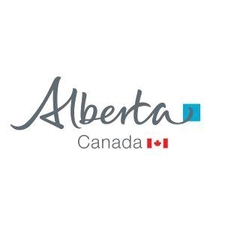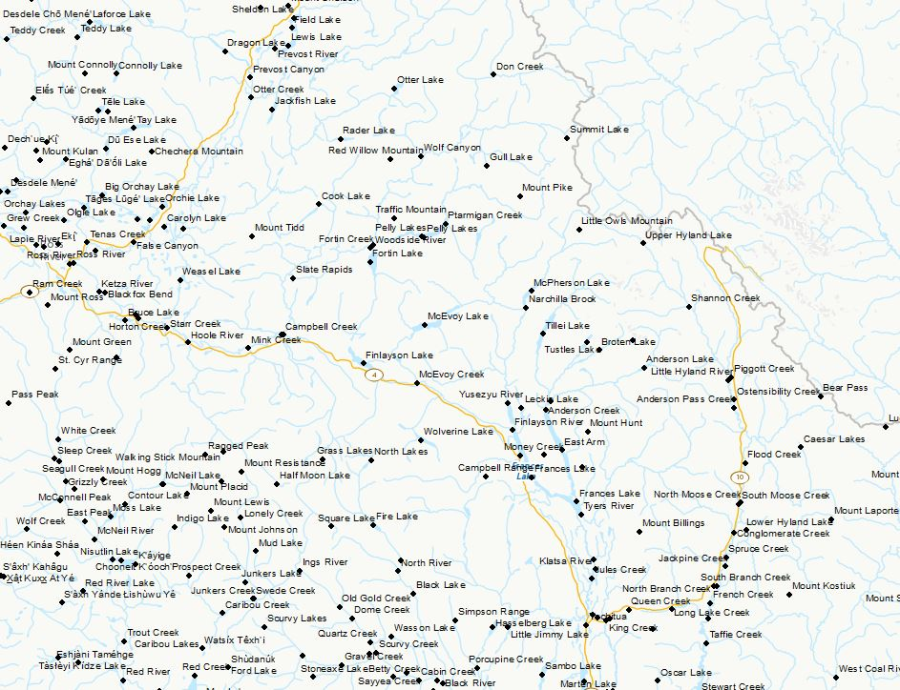Sciences de la Terre
Type of resources
Available actions
Keywords
Contact for the resource
Provided by
Years
Representation types
Update frequencies
status
Service types
-
Le Canada est divisé en 338 circonscriptions. Un représentant du Parlement ou député est élu pour chacune des circonscriptions. Après la diffusion des chiffres de population de chaque recensement décennal, le directeur général des élections détermine le nombre de sièges à la Chambre des communes et publie cette information dans la Gazette du Canada. Les commissions de délimitation des circonscriptions déterminent ensuite les modifications à apporter aux limites des circonscriptions. Les commissions de délimitation des circonscriptions fédérales sont des organismes indépendants qui prennent toutes les décisions concernant les limites proposées et définitives des circonscriptions fédérales. Élections Canada offre des services de soutien à la commission de délimitation des circonscriptions dans chaque province. À la lumière des rapports de ces commissions, le directeur général des élections prépare un décret de représentation électorale faisant état des limites, du nom et de la population de chaque CF. Le décret de représentation électorale prend effet à la première dissolution du Parlement qui se produit au moins sept mois après sa proclamation. Le décret de représentation électorale de 2013 (proclamée le 5 octobre 2013) était fondée sur les chiffres de population du recensement de 2011; le nombre de CF, établi à 308 selon le décret de représentation électorale de 2003, est passé à 338. L’Ontario s’est accru de quinze sièges, l’Alberta et la Colombie-Britannique en ont gagné six chacun, alors que le Québec en a ajouté trois. Le 19 juin 2014, la Loi de 2014 sur les changements de noms de circonscriptions (Projet de loi C-37) a reçu la sanction royale modifiant les noms de 31 CF. Le nom des CF peut être modifié n’importe quand par une loi fédérale.
-
Le Canada est divisé en 308 circonscriptions. Un représentant du Parlement ou député est élu pour chacune des circonscriptions. Après la diffusion des chiffres de population de chaque recensement décennal, le directeur général des élections détermine le nombre de sièges à la Chambre des communes et publie cette information dans la Gazette du Canada. Les commissions de délimitation des circonscriptions déterminent ensuite les modifications à apporter aux limites des circonscriptions. Les commissions de délimitation des circonscriptions fédérales sont des organismes indépendants qui prennent toutes les décisions concernant les limites proposées et définitives des circonscriptions fédérales. Élections Canada offre des services de soutien à la commission de délimitation des circonscriptions dans chaque province. À la lumière des rapports de ces commissions, le directeur général des élections prépare une ordonnance de représentation faisant état des limites, du nom et de la population de chaque CF. L'ordonnance de représentation prend effet à la première dissolution du Parlement qui se produit au moins un an après sa proclamation. L'Ordonnance de représentation de 2003 (proclamée le 25 août 2003) était fondée sur les chiffres de population du recensement de 2001; le nombre de CF, établi à 301 selon l'Ordonnance de représentation de 1996, est passé à 308. L'Ontario s'est accru de trois sièges, alors que l'Alberta et la Colombie-Britannique en ont gagné deux chacun. Le 19 juin 2014, la Loi de 2014 sur les changements de noms de circonscriptions (Projet de loi C-37) a reçu la sanction royale modifiant le nom de la CF de Western Arctic à Territoires du Nord-Ouest. Le nom des CF peut être modifié n'importe quand par une loi fédérale.
-

The National Rail Network (NRWN) is a geometric and attributive description of the Canadian rail network. The NRWN product consists of the features classes: Track Segment, Railway Crossing, Railway Station, Marker Post, Junction and Railway Structure. Descriptive attributes include amongst others: Track Classification, Track Name, Track Operator, Track User, Track Owner, Subdivision Name, Junction Type, Crossing Type, Level of Crossing, Warning System, Transport Canada Identifier, Station Name, Station Type, Station User, Structure Type.
-

The distribution of Property - Municipal Boundaries data to the public is provided by AltaLIS Ltd., distributing agent for the Alberta Data Partnerships Ltd. (ADP), formerly Spatial Data Warehouse Ltd. (SDW), on behalf of the Government of Alberta. The Property - Municipal Boundaries data includes a GIS-ready mapping database created by Alberta Environment and Parks and includes the following: Counties, MD’s, Special Areas, Improvement Districts, Cities, Towns, Villages, Summer Villages and Hamlets. This product is available from AltaLIS Ltd. under the Province of Alberta’s ‘Open Government Licence’.
-

This is a legacy product that is no longer supported. It may not meet current government standards. The Canadian Digital Surface Model (CDSM) is part of Natural Resources Canada's altimetry system designed to better meet the users' needs for elevation data and products. The 0.75-second (~20 m) CDSM consists of a derived product from the original 1-second (30 m) Shuttle Radar Topographic Mission (SRTM) digital surface model (DSM). In these data, the elevations are captured at the top of buildings, trees, structures, and other objects rather than at ground level. A CDSM mosaic can be obtained for a pre-defined or user-defined extent. The coverage and resolution of a mosaic varies according to the extent of the requested area. Derived products such as slope, shaded relief and colour shaded relief maps can also be generated on demand by using the Geospatial-Data Extraction tool. Data can then be saved in many formats. The pre-packaged GeoTiff datasets are based on the National Topographic System of Canada (NTS) at the 1:50 000 scale; the NTS index file is available in the Resources section in many formats.
-

Canada is divided into 308 electoral districts. A representative or member of Parliament is elected for each electoral district. Following the release of population counts from each decennial census, the Chief Electoral Officer determines the number of seats in the House of Commons and publishes the information in the Canada Gazette. Electoral boundaries commissions then determine the adjustments to the constituency boundaries. The federal electoral boundaries commissions are independent bodies that make all decisions regarding the proposed and final federal electoral boundaries. Elections Canada provides support services to the boundaries commission in each province. Based on reports from these commissions, the Chief Electoral Officer prepares a representation order that describes the boundaries and specifies the name and the population of each FED. The representation order is in force on the first dissolution of Parliament that occurs at least one year after its proclamation. The 2003 Representation Order (proclaimed on August 25, 2003) was based on 2001 Census population counts, and increased the number of FEDs to 308, up from 301 from the previous 1996 Representation Order. Ontario received three additional seats, while Alberta and British Columbia each gained two seats. The names of FEDs may change at any time through an Act of Parliament.
-
GeoAI are buildings, hydrography, forests, and roads automatically extracted using Deep Learning models applied to a source dataset, typically aerial or satellite images. The primary aim of GeoAI is to increase Canada's availability of high-resolution foundational geospatial data for both spatial and temporal coverage. The infrastructure and expertise put in place by NRCan enables a rapid, efficient, and scalable data creation process through the use of leading-edge technology and Artificial Intelligence models. Published datasets for a given source can be revisited at a later date as more accurate models are developed and put into production. For now, only static files are available, but as the series develops, new products and services will be added.
-

Canada is divided into 338 electoral districts. A representative or member of Parliament is elected for each electoral district. Following the release of population counts from each decennial census, the Chief Electoral Officer determines the number of seats in the House of Commons and publishes the information in the Canada Gazette. Electoral boundaries commissions then determine the adjustments to the constituency boundaries. The federal electoral boundaries commissions are independent bodies that make all decisions regarding the proposed and final federal electoral boundaries. Elections Canada provides support services to the boundaries commission in each province. Based on reports from these commissions, the Chief Electoral Officer prepares a representation order that describes the boundaries and specifies the name and the population of each FED. The representation order is in force on the first dissolution of Parliament that occurs at least seven months after its proclamation. The 2013 Representation Order (proclaimed on October 5, 2013) was based on 2011 Census population counts, and increased the number of FEDs to 338, up from 308 from the previous 2003 Representation Order. Ontario received fifteen additional seats, Alberta and British Columbia each gained six seats while Quebec added three seats. On June 19, 2014, the Riding Name Change Act, 2014 (Bill C-37) received Royal Assent changing the names of 31 FEDs. The names of FEDs may change at any time through an Act of Parliament.
-

The distribution of Base - Small Scale Topographic data to the public is provided by AltaLIS Ltd., distributing agent for the Alberta Data Partnerships Ltd. (ADP), formerly Spatial Data Warehouse Ltd. (SDW), on behalf of the Government of Alberta. The Base - Small Scale Topographic data includes a vector mapping database created by Alberta Environment and Parks and includes the following: 1:250 000 Base, 1:1 000 000 Base and 1:2 000 000 Base.
-

The Canadian Geographical Names Data Base (CGNDB) is the authoritative national database of Canada's geographical names. The purpose of the CGNDB is to store place names and their attributes that have been approved by the Geographical Names Board of Canada (GNBC), the national coordinating body responsible for standards and policies on place names. The CGNDB is maintained by Natural Resources Canada, through the Canada Centre for Mapping and Earth Observation. The geographic extent of the CGNDB is the Canadian landmass and water bodies; the temporal extent is from 1897 to present. This dataset is extracted from the CGNDB on a weekly basis, and consists of current officially approved names, feature type, coordinates of the feature, decision date, source, and other attributes. The output file formats for this product are: text (CSV), Shape (SHP), and Keyhole Markup Language (KML). Content advisory: The Canadian Geographical Names Database contains historical terminology that is considered racist, offensive and derogatory. Geographical naming authorities are in the process of addressing many offensive place names, but the work is still ongoing. For more information, please contact the GNBC Secretariat.
 Arctic SDI catalogue
Arctic SDI catalogue